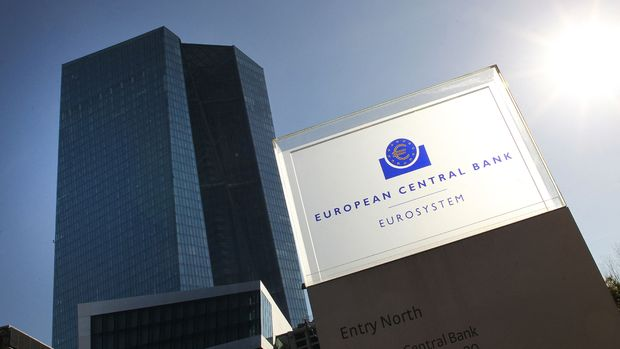End of an era in the Eurozone
In line with expectations, the European Central Bank (ECB) cut interest rates by 25 basis points, lowering the deposit rate to 3.75 percent. The decision text included the statement, “We will keep interest rates sufficiently restrictive for as long as necessary. The Governing Council does not make a priori commitment to a specific rate.” With inflation in the Eurozone becoming less of a problem than the weak economic growth outlook, the European Central Bank (ECB) lowered its benchmark interest rates for the first time in nearly 5 years. The ECB Governing Council lowered the refinancing, deposit and marginal funding rates by 25 basis points to 4.25, 3.75 and 4.50 percent, respectively. The decision text included the statement, “We will keep interest rates sufficiently restrictive for as long as necessary. The Governing Council will continue to follow a data-driven and meeting-by-meeting approach to determine the appropriate level and duration of restrictions. The Governing Council does not make a priori commitment to a specific rate.” This was the first cut in both the refinancing rate and the marginal funding rate since March 2016. It was the first cut in the deposit rate since September 2019. The updated three-month outlook published along with the ECB’s policy statement projects inflation to average 2.2 percent in 2025. This year’s economic growth forecast was raised from 0.6 percent to 0.9 percent. While the Fed has signaled that it will keep interest rates high until it receives more evidence that inflation in the US is moving towards target, it is anticipated that the ECB’s rate cut could have a downward impact on the euro. With the ECB cutting interest rates by 25 basis points each, the gap between eurozone and US interest rates will also widen. Annual inflation in the eurozone had exceeded expectations ECB officials, led by ECB President Christine Lagarde, had emphasized that they were comfortable with decoupling from the Fed, even if there was a risk of a weaker currency that could trigger inflation. Data released on May 31 showed that consumer prices in the euro zone beat expectations at 2.6 percent on an annual basis in May. Bloomberg Economics had expected a 25 basis point cut from the ECB in June and said that after leaving interest rates unchanged in July, they foresaw further cuts of the same magnitude in September, October and December. However, Lagarde had said on March 20 that the ECB would likely have sufficient assurance to decide on the first rate cut in June 2024, saying, “We cannot commit in advance to the path that interest rates will follow after the first rate cut.” Joachim Nagel, president of the Bundesbank and a member of the ECB Governing Board, said in March that inflation in the euro zone could be stubborn and that the ECB could not make any commitments about what would happen after the first possible rate cut in June. The decision of the ECB, one of the world’s most important central banks responsible for managing the monetary policy of 20 countries included in the Eurozone, to lower interest rates is expected to make borrowing to buy a house or consumer goods cheaper and to be a turning point in the fight against high inflation that has been preoccupying monetary policy officials for more than two years. Lagarde: We will continue to keep interest rates restrictive for as long as necessary ECB President Christine Lagarde made the following statements at the press conference held after the interest rate decision: “We see that the pressures underlying inflation have eased somewhat. We see that price stability is weakening and inflation expectations are trending downward. There is a serious recovery in inflation forecasts. The latest inflation forecasts were revised upwards for 2024 and 2025. We will keep interest rates sufficiently limited. We will determine the tightening process with the decisions we will make from meeting to meeting. We expect the economy to continue to improve. There is a slightly more stable outlook on the production side. We expect the economy to continue to improve. Food inflation came down, while there was an upward movement in energy. Wage increases will become more moderate by the end of this year. Inflation is likely to continue to fluctuate until the end of the year. Inflation expectations have generally stabilized. We see that credit dynamics remain weak. The rise in geopolitical risks makes the upcoming period uncertain. Banks in the Eurozone remain resilient. We will continue to keep interest rates restrictive as long as necessary. We decided to cut interest rates because our confidence in the upcoming period has increased. We will follow the data to determine whether the disinflationary process will continue. We will need more data in the upcoming period, only then can we understand that we are on a disinflationary path. I cannot say at what pace monetary policy will proceed.”


